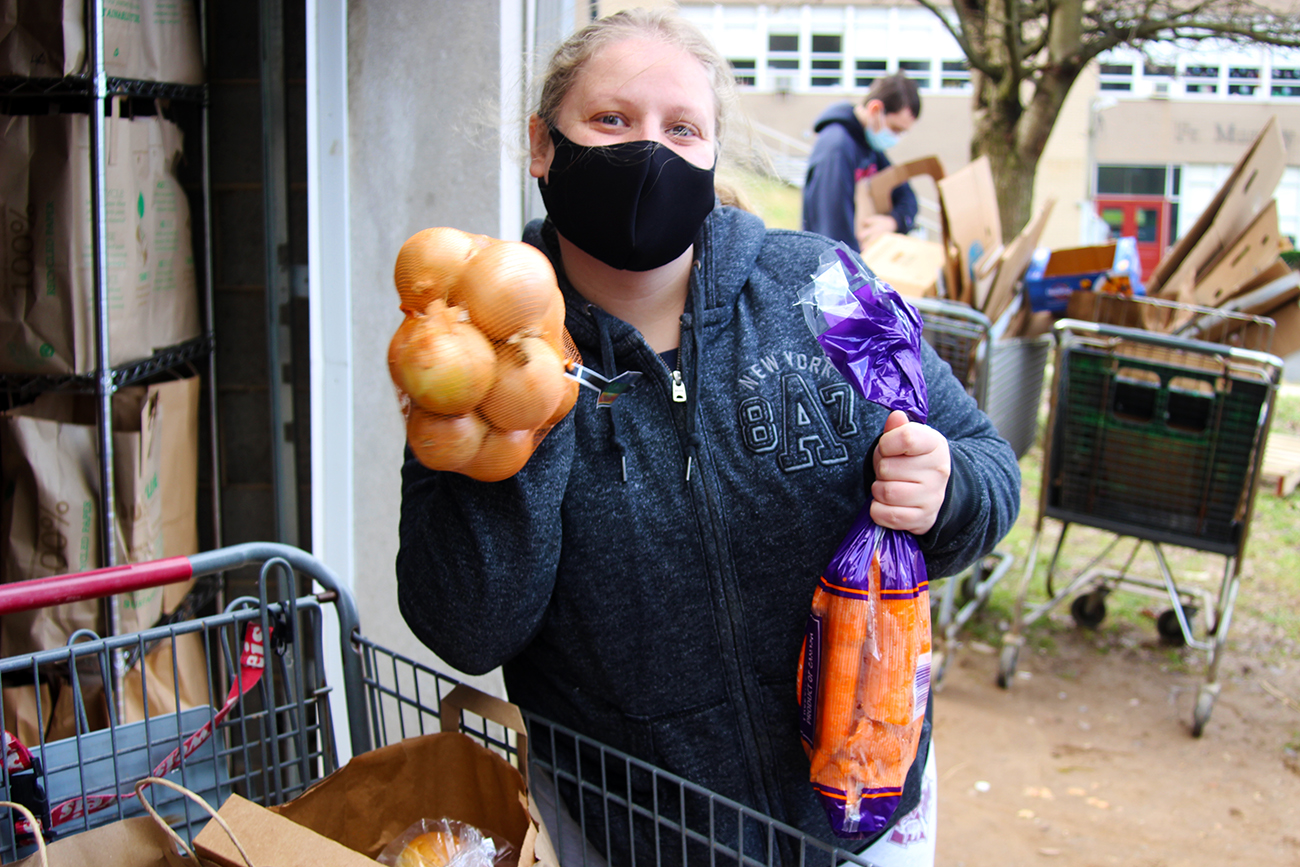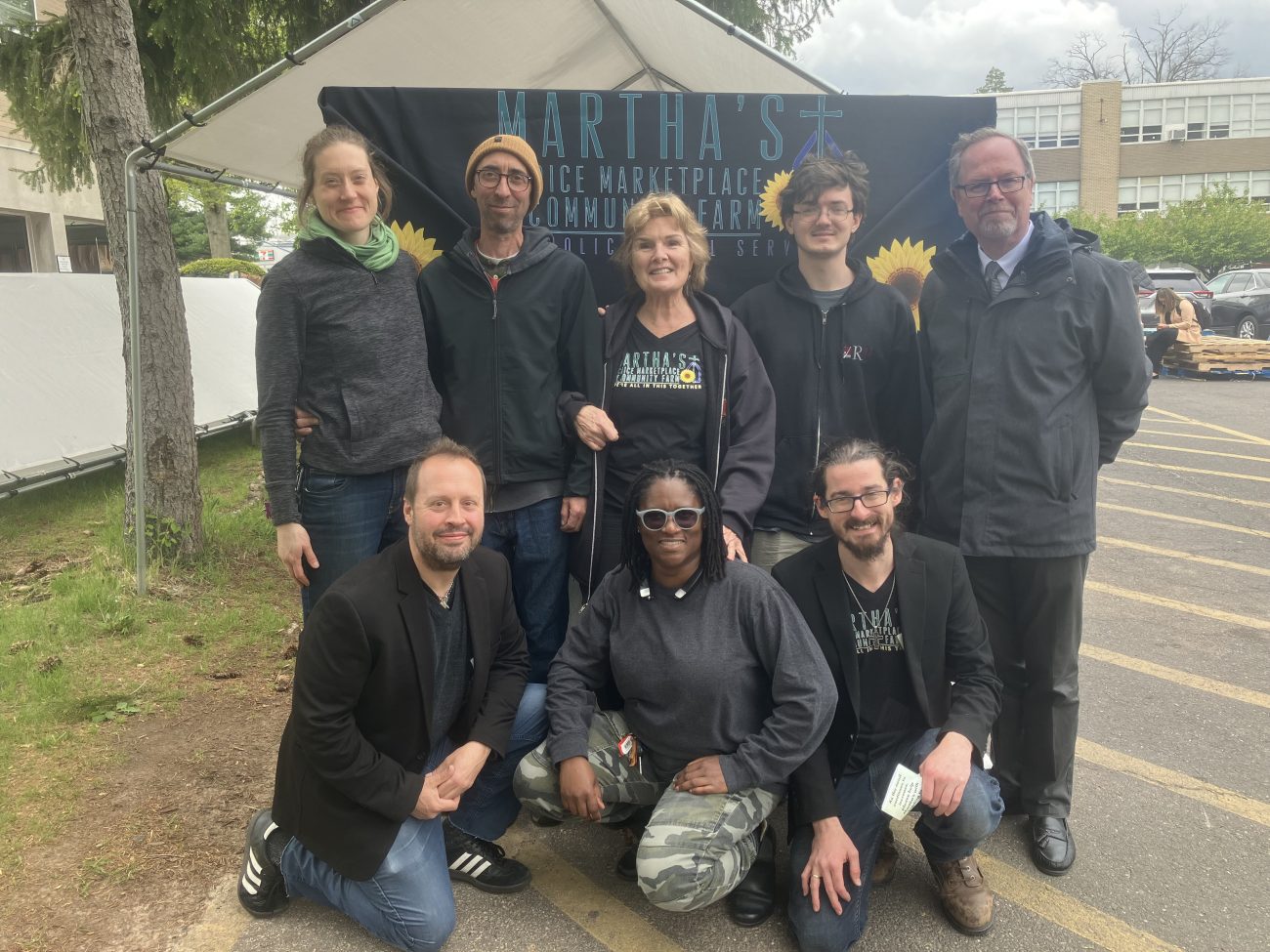Families’ need for sustenance from food pantries has dramatically multiplied since the start of the COVID-19 pandemic, and government financial resources to help many of them has dwindled as the pandemic has lessened.
But from the basement of a convent in Norristown, Martha’s Choice Marketplace and Community Farm – an arm of Catholic Social Services – has continually pivoted to be present to its increasing guests’ needs.
“Numbers going from pre-pandemic, 600-700 families per month, [rose] to the neighborhood of 2,000 or more families per month,” said Eli Wegner, director of operations for Martha’s Choice which distributes nearly 2 million pounds of food each year. “It keeps on evolving in order to meet the need.”
That evolution has taken many steps, including the way Martha’s Choice helps its patrons, particularly with the limits of space within their convent space at St. Paul’s and within their budgets.
“There’s probably 20 different things that we’ve had to either reinvent in certain ways or adapt to a new kind of approach, in order to continue,” said Wegner.
“The interesting thing is, each limitation sort of creates an opportunity on some kind of level, to sort of rethink how you approach it.”
One pre-pandemic example involves how, instead of simply receiving a box of food, they built a grocery store-style approach.
“We transitioned to a choice model,” said Wegner. “The folks that we serve choose the food most appropriate for themselves and their family.”
But the COVID-19 pandemic made necessity the mother of re-invention, meaning a drive-thru method of boxing up necessary food and supplies – again limiting choice options for their guests, but creating convenience in other ways.
“One nice thing that came out of the pandemic and the drive-thru was that people didn’t have to stand in a physical line for three hours outside and in the elements before they could come in and receive food, said Patrick Walsh, director of programs for Martha’s Choice. “There’s been some pluses, but the scale of it has been a challenge to contend with. And so we’re trying to figure that out.”

In this Nov. 2020 photo, a volunteer at Martha’s Choice helps distribute food to families in need.
In another successful implementation of “figure that out,” they have gone to offering guests an online portal which gives Martha’s Choice feedback on what individual guests and their families need and desire, leading them to also work on sourcing the food guests want within the bounds of their budget and growing capability at the community farm.
The portal also helps staff target special needs that individual families may need.
“They may be looking for dietary needs, people that are diabetic, people that have children in need, diapers…feminine products, gluten-free, any different kinds of aspects of their life experience that we might be able to kind of tailor our services to improve,” Wegner said.
“I think it fulfills the command of the Lord to feed the hungry, but also it respects their God-given human dignity,” said Auxiliary Bishop John J. McIntyre, who oversees the Secretariat for Catholic Human Services as part of his administrative and pastoral responsibilities and serves as president of Catholic Social Services.
“It makes them feel more of their own their own dignity in terms of being able to choose some items that they might want to prefer.”
The choice model also brings another opportunity for meeting human dignity, engaging in relationships beyond the encounter of feeding guests’ bodies.
“That’s something that people value and that people need,” said Walsh. “We know most of these folks by first name. A lot of them are like friends and very much like family. Many of them are still with us, people who we saw for the first time eight years ago when we started this job. And so it’s been a joint question of how do we sustain this operationally in the context of what we’re giving out, but also in the way that we do it?”

Martha’s Choice staff sort through food donations delivered to the site.
The culture of innovative compassion at Martha’s Choice partially comes from the level of trust and partnership that Walsh and Wegner share within the office, having reinvented their programs so many times. Their familiarity also has built trust with the thousands of families they serve.
“They’ll [clients and staff] work with us, because they understand that we’re coming from a place that is true,” said Wegner. “That gives us a little bit of bandwidth to try new things, when maybe if someone else came in on their first day and tried to do the same thing, it might be met with a little bit more skepticism and a little bit more resistance.”
Martha’s Choice has also instituted other digital innovations, including a text-based service to quickly inform their guests of any key news in real time.
“ ‘Hey, everybody, the snow is coming down,’ or ‘There’s wildfires in Canada, and the air is bad, [so] we’re going to be closed today,’” said Wegner. “But they also can text us directly to privately, ask us questions.”
He said technology is also helping them overcome language barriers with a large percentage of those they serve. Over half of Martha’s Choice clients are Hispanic.
“There was always a language barrier between myself and most of the staff with our Spanish-speaking guests, which have gone from about 20% to about 50% of the folks that we serve over the last three years,” said Wegner.
“They [clients] can text us in Spanish, we can put that into Google Translate, know exactly what they’re asking, type back a response using Google Translate, and we can have ongoing dialogue…with them in their language that they understand.”
But to meet these families’ needs, Martha’s Choice needs to overcome the recent removal of about $250,000 in yearly pandemic-related government benefits, and they need to make up at least a large piece of that shortfall through public donations.
“The food resources specifically that were available during COVID to meet that need have all gone away, and so now we’re trying to make up for it in the neighborhood of $200,000 to $300,000 worth of food that used to be available to us that is no longer available,” Wegner explains. “How do we meet this need without that food? That is the big challenge that we are facing.”
“There’s no way of getting around the fact that we simply need funds to acquire food,” Walsh said. “That is an ongoing need, and we’re continuing to try to expand the pie of people contributing to that.”
Walsh also encourages people to join their ever-growing volunteer team both at the marketplace and the community farm, but also to consider their own resources that may help the site lower overall operational cost, or further innovate and create solutions to feed more in need.
“It might not be a bad time to take stock of your connections within your own network and see if there’s any dots that could be connected to help us potentially access food at a better price,” said Walsh.
“Help us get to know people who are in a position to take these really necessary large steps forward in expanding our food sourcing budget and network.”
Those interested in volunteering at the Community Farm or making a financial contribution to support the work of Martha’s Choice Marketplace can visit here. The site can also be found on Facebook here.
PREVIOUS: Our Lady of Good Counsel Celebrates 100 Years with Church Replica, Events, Gala Dinner
NEXT: St. Joe’s University Student Appointed to Participate in Synod of Bishops




Share this story